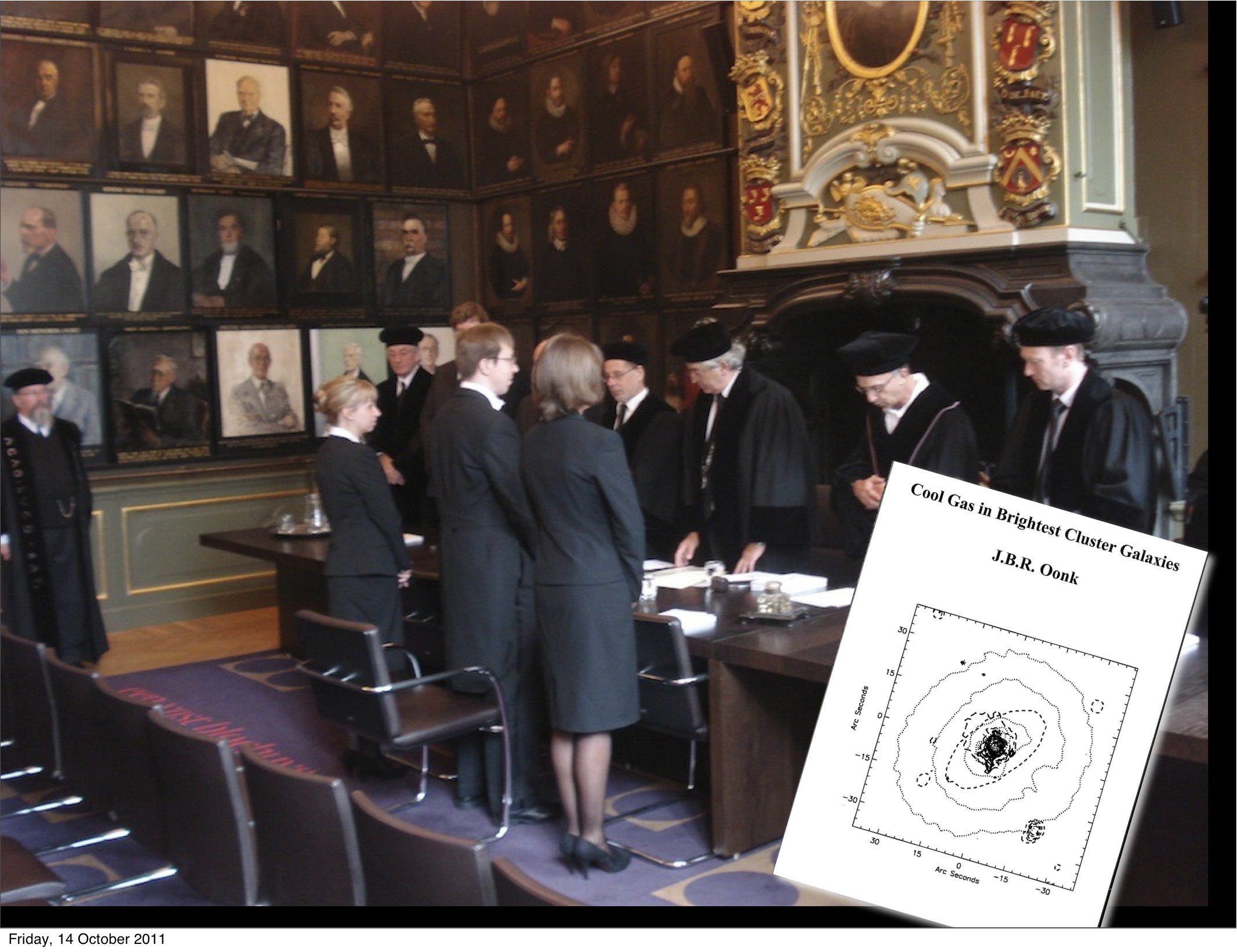Daily Image
24-10-2011Raymond Oonk successfully defends his PhD thesis on cool gas in clusters
| Submitter: | Raffaella Morganti |
| Description: | On October 6th one of our recently acquired postdoc, Raymond Oonk, successfully defended his PhD thesis in Leiden. The thesis on "Cool gas in brightest cluster galaxies", was supervised by Walter Jaffe and the picture shows the exciting moment of Raymond receiving his doctorate! Congratulations! Rich, relaxed Galaxy Clusters often have central ~200 kpc regions showing hot X-ray emitting gas, at a hundred million Kelvin, dense enough to cool by its own radiation within a Hubble time. Although very little of the hot gas cools below ten million Kelvin, one finds that some cooler gas, at temperatures below ten thousand Kelvin, exists in the central ~50 kpc region of the cluster. This region is occupied by the Brightest Cluster Galaxy and its immediate neighbourhood. The origin of the cool gas is unknown, but it has the same requirements as the hot X-ray emitting gas. Raymond's thesis focuses on determining the properties and reheating mechanisms of the cool gas. By studying this gas, rich in diagnostics, the hope was to also achieve further insights into the reheating of the hot gas. He used observations from ground-based telescopes, such as the Very Large Telescope in Chile, and space-based telescopes, such as the Herschel and Hubble Space Telescopes. Combining these multiwavelength observations with photoionisation modeling, he finds that a single, diffuse heating source, capable of producing non-stellar high energy photons, provides the best explanation to the data. In his thesis he showed that, under certain conditions, this source can be provided by the photons coming from the hot X-ray emitting gas in the core of the cluster. With his extensive optical experience, Raymond will provide a point of contact between the astronomers and the optical/IR NOVA group. But Raymond is also looking around for new challenges connected with the radio work that we do at ASTRON. The first results are already beginning to appear with some interesting detections of cold gas (this time in neutral hydrogen, HI) in clusters using the Westerbork Synthesis Radio Telescope (also part of a summer student project supervised by Raymond, see Daily Image 26-08-2011) |
| Copyright: | Reinout van Weeren |
| Tweet |  |
